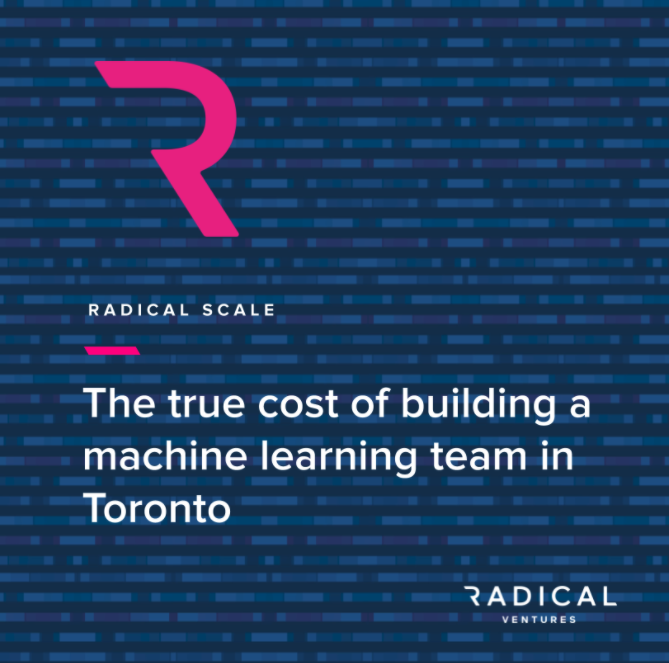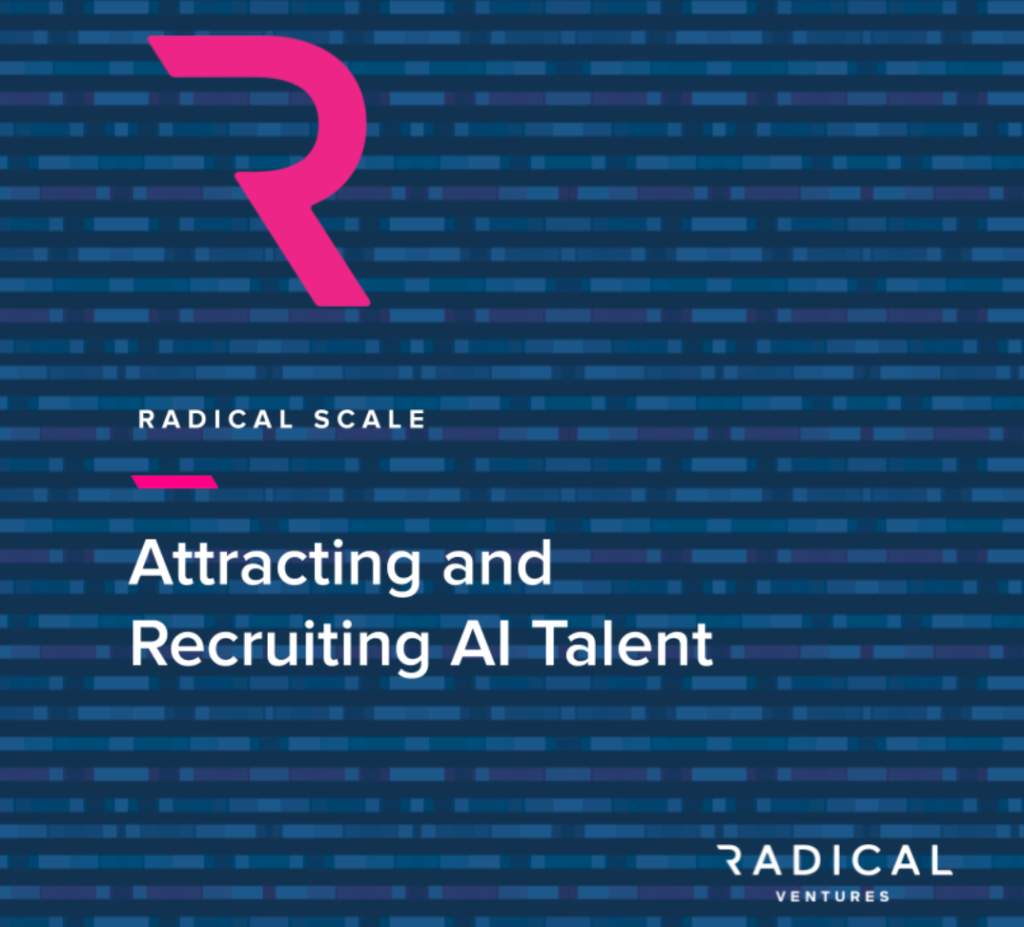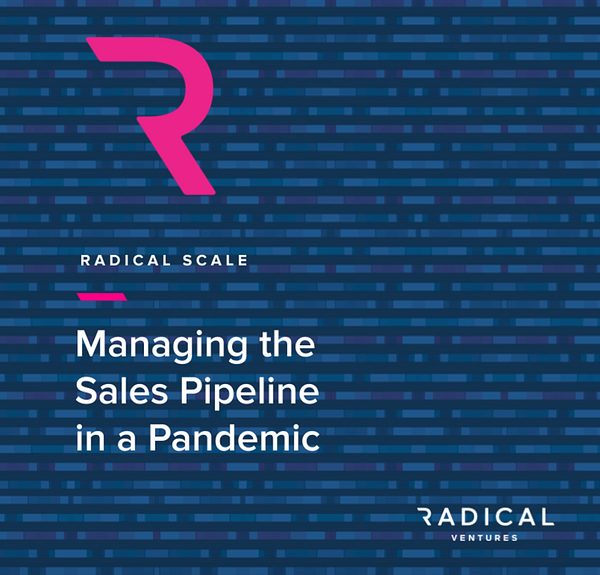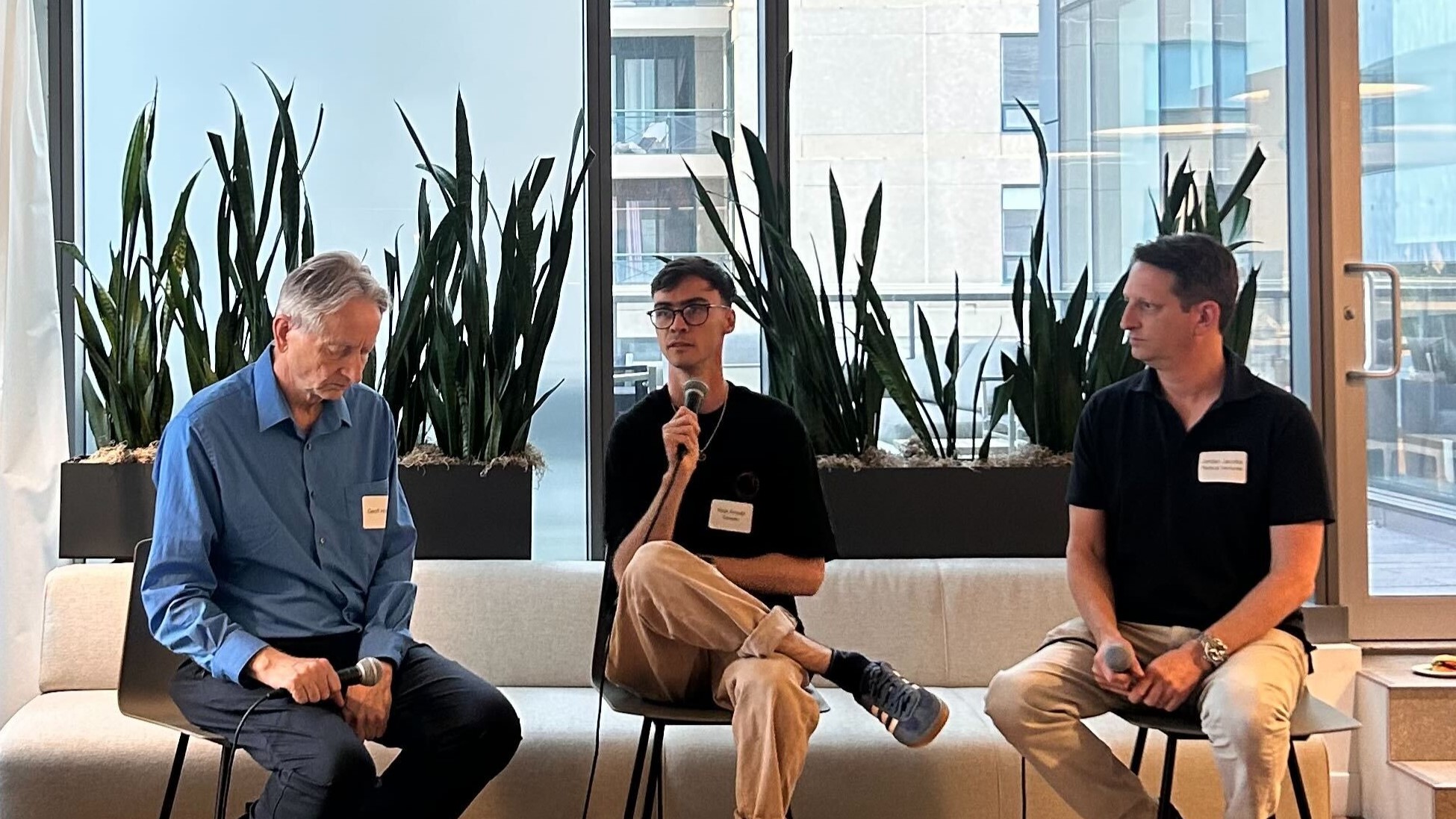Radical Scale is a regular feature that explores key strategies for growing early stage technology companies.
This issue of Radical Scale looks at how to write a job description to attract AI talent with Radical’s Director of Talent, Meg Lizza.
Attracting strong AI talent is one of the most challenging undertakings for any business.
Companies bombard desirable candidates (i.e., Machine Learning Engineers and Researchers) with job descriptions that are boring, packed with buzzwords, and vague. In a competitive talent market, a clear and compelling job description can be a critical first step in filling your open roles.
Below, we break down a technical job description into five sections. We provide tips to avoid common mistakes and help your company stand out in this crowded space.
The Job Title
What type of candidate do you want to attract?
The title should reflect the qualifications and competencies of the role, which we outline later in this post. Ensure that the job title aligns with the industry norm and will attract the right type of target candidate.
Section 1: About your company
Tell your company narrative, but make it short and sweet.
- Have a hook!
- The first line of your ‘about’ section should immediately intrigue your target
candidate.
- The first line of your ‘about’ section should immediately intrigue your target
- State your mission and define how it will make an impact.
- Typically, technical candidates interested in joining a startup want to make a direct impact. No one wants to be a cog in the machine. Candidates with highly valuable skills, given the option, will choose to contribute to a better tomorrow or disrupt a current technology.
Section 2: Job Overview
Why would the candidate want this role?
- Define 3 to 4 points on why this candidate should want to join your company in this
position.- State what this person will be building (e.g., large-scale neural nets, a revolutionary computer vision product, etc.).
- Define how the person will contribute and provide details on the team they are joining. For example, will the candidate be working cross-functionally with both the engineering and research team or engaging with external stakeholders?
- Outline what the person can expect from joining your company. Describe how they will contribute to the mission of the team.
- Use high impact words (not buzzwords).
- High impact words are carefully hand-picked terms in your job description that should clarify when and how the candidate will be contributing to your ML product lifecycle. These words should be used sparingly.
- For example, using the verbs design, develop, train and improve means that the machine learning hire will be closer to R&D than the engineering side. The verbs ship, implement, and productionize mean that the hire will be closer to the engineering side of the model lifecycle. Both verb types are used in some job descriptions when employers are looking for that ‘unicorn’ candidate. Ultimately, if you are developing, training, and shipping ML models into production, you want to ensure your job description uses the appropriate language.
Section 3: Responsibilities
Describe the job.
- Clearly define near and long-term responsibilities.
- Do not just convey the day-today. Describe what successful candidates will be expected to do over the next 6 to 12 months.
- Use precise language that reflects the exact goals of the role.
- In each bullet, use concise language that describes what you want this future employee to accomplish.
- Verbs like design, develop, implement, train, maintain, and scale are helpful starting points.
- Link your defined responsibilities to the right job title.
- There are numerous job titles seeking similar profiles. Below is a high-level summary showing how we match titles to responsibilities and qualifications at Radical Ventures.
| Job Title | Profile | Qualifications |
|---|---|---|
| Data Scientist | Focuses on building statistical models for data analysis. Usually stronger stats and math background. | Python R SQL Data visualization Classical ML Models |
| Machine Learning Engineer | Deploys ML models into production. Continues to train and optimize. Strong coding skills | Python/C++ MLOps Containerization (Docker or Kubernetes) Backend/Frontend |
| Machine Learning Research Scientist | Research and design focused. Spends time thinking about problem, designing, prototyping, training, and validating models. | Top-tier publication record Background in ML research and/or DL models, and NNs |
| Research Engineer/Applied Research Scientist | Designs, trains and deploys ML or DL algorithms to solve real world problems. Strong research and engineering skills. | Python/C++ DL frameworks Top-tier publication record Implements NNs and/or ML models |
Section 4: Qualifications and Skills
Who would be the perfect fit for the role and the company?
- Let’s get technical
- Make sure to include the key skill sets you want this person to have familiarity with, including preferred languages, frameworks, neural architectures, specific algorithms, and research areas.
- Including these keywords and skills in the job description will improve candidates’ ability to find the position when searching. Be concise, do not list every neural network ever to exist.
- Don’t forget about the soft skills!
- While a candidate can look great on paper, you want to make sure they fit within your team. Your job description should always echo your company culture.
- Examples of characteristics include communicative, humble, collaborative, dynamic, curious, and self-driven.
- Add some ‘nice-to-haves’
- Everyone is looking for the perfect candidate, but chances are you may not be able to 1) find them or 2) afford them.
- Make sure to include a few nice-to-have skills that would be a huge bonus, but are also teachable for the right hire. These nice-to-haves, or bonus skills, are typically niche technical skills tied to your industry.
- These bonus skills help separate and break down the requirements encouraging strong, adaptable candidates to apply.
Section 5: Benefits
Finish with your perks, company culture highlights, and benefits!
- Perks
- Your company’s perks, opportunities, and work spaces that make working at your company that much better.
- Some things to highlight (if they are relevant to you) may include AI publication reading circles, catered lunches, arts and culture initiatives, fitness and mental health initiatives, and work from home days.
- You want to cultivate an inclusive culture and work environment, and you should make sure your perks reflect your company’s values.
- Benefits
- Standard benefits include healthcare, dental and vision, visa support, 401k, mental health support, etc. These are important to highlight and include in your description.
Closing considerations
- Look at your competitors
- When drafting an initial job description, the first thing you should do is review every comparable job description with your direct competitors.
- Ask yourself – what do my competitors have that I don’t? What do I want to do differently? What are they not highlighting that is a must for our company? How do competitors structure their roles?
- Close out your job description with a disclaimer
- You want to encourage candidates to apply that may not fit every requirement perfectly but are hungry and adaptable.
- Here is a sample closing disclaimer: “Don’t fit every requirement, but still feel that you’d be a good fit? We encourage you to apply anyway.”
- Define if the role is fully remote or not
- Clearly define if this role is remote-friendly or if this employee must be within the same city as your current headquarters. Do not be vague on this and have your post-pandemic return to work plan set in place.
Expert
-
Meg Lizza is the Director of Talent of Radical Ventures. She currently leads Radical’s human capital efforts by supporting the firm’s talent network and partnering with portfolio companies on their talent management strategy and technical recruitment needs. Prior to joining Radical, Meg specialized in machine learning recruitment in New York City, where she helped build machine learning research and engineering teams in various hedge funds, private equity groups and other fintech startups, including Layer 6 AI.
Meg holds a Bachelors of Arts degree from Georgetown University, where she majored in Government and minored in French and History.
About the Radical Ventures Impact Team
The Radical Ventures Impact Team is dedicated to helping its portfolio companies achieve global scale by providing deep technology expertise, go-to-market guidance, talent acquisition, strategic communications, and policy support.
If you want to learn more about Radical or its talent efforts, please reach out to Meg Lizza at meg@radical.vc or check out our portfolio open roles on our careers page.





